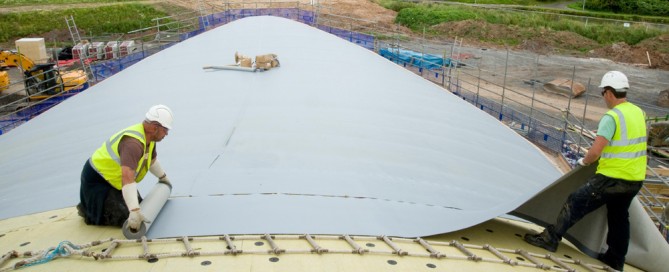Flat roofing’s high five!
The technical team at SIG Design Technology’s have seen a few roofing horror stories in their time, here we spell out five golden rules in flat roofing.
Rule 1: Remember that flat roofs aren’t flat
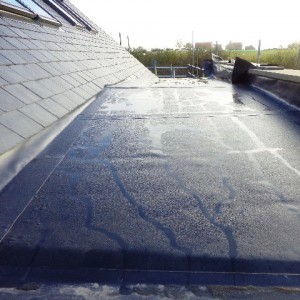
Rule 1: Remember flat roofs aren’t flat
British Standard BS 6229:2003 code of practice (which is currently under review) describes flat roofs as those having a pitch not greater than 10 degrees. The standard also goes on to also identify min 1:80 respectively for single ply membranes.
A roof which does not comply with these minimums industry accepted standards is likely to attract ponding water, moss, fungal and algae growth, increased maintenance costs and there’s a much greater chance of water entry should there be a defect or damage affecting the roof coverings. Failing to comply with the BS may also negate any third party insurance cover and or manufacturer’s guarantee.
Rule 2:
Maintain those minimum upstand heights
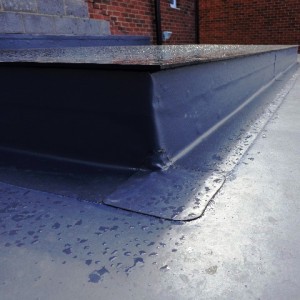
Rule 2: Minimum height 150mm
Continuity of waterproof coverings should be maintained for a vertical height of 150mm above the finished roof level at all abutments, door openings and parapets.
Achieving this minimum upstand height is very important but so is how the top of this upstand interfaces with flashings, cappings or the other building elements. The installation also needs to be sequenced properly; especially at door thresholds where there is a very small gap to seal between that and the upstand.
Rule 3: Roofs need maintenance
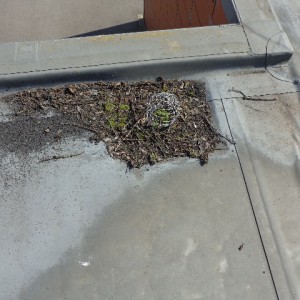
Rule 3: Roofs need regular maintenance
Roofs need TLC too. The service life of roofing systems may be significantly extended (or reduced) by periodic maintenance (or lack of).
All flat roofs should have regular inspections both internally and externally every spring and autumn as a minimum. Everyone knows that it’s vital to have your car or boiler inspected and or serviced regularly as they are valuable assets. So is the roof. Make sure that the end user knows his responsibility after the roofing is complete. Or you might be recalled to site to find a healthy oak sapling happily establishing its roots in the blocked gutter!
Rule 4: Night joints
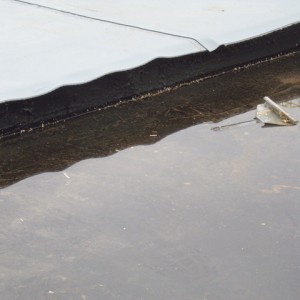
Rule 4: Adequate night joints prevent leaking roof
Trapped moisture in new constructions can lead to not only damage but constant call backs to a ‘leaking’ roof where there’s no actual water ingress. Just ensure that adequate night joints are created.
Night joints in roofing aren’t what might spring to mind! They should be formed at the end of a day’s installation when all the insulation has been adequately covered to avoid trapping in any rain that’s fallen overnight or the following day.
Rule 5: Check your laps as work progresses
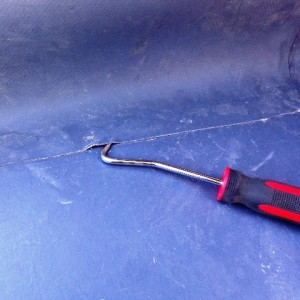
Rule 5: Testing a weld
The responsibility for checking laps, fixing centres and monitoring adhesive consumption etc. is that of the installer laying the membrane! Some lackadaisical contractors like to leave these essential checks to the end or when the rep undertakes a site visit.
Alternatively, the roofer’s inspections are never done or so many faults are found that the manufacturer’s rep simply walks away. Site support is exactly that, not a free checking service for sluggish individuals. The contractor needs to put in place a written QA / QC process which records on a daily basis those roof areas completed and checked.
Demonstrating a rigorous approach not only minimises later problems but can enhance your reputation with the main contractor and manufacturer. And roofers needs repeat business too!




